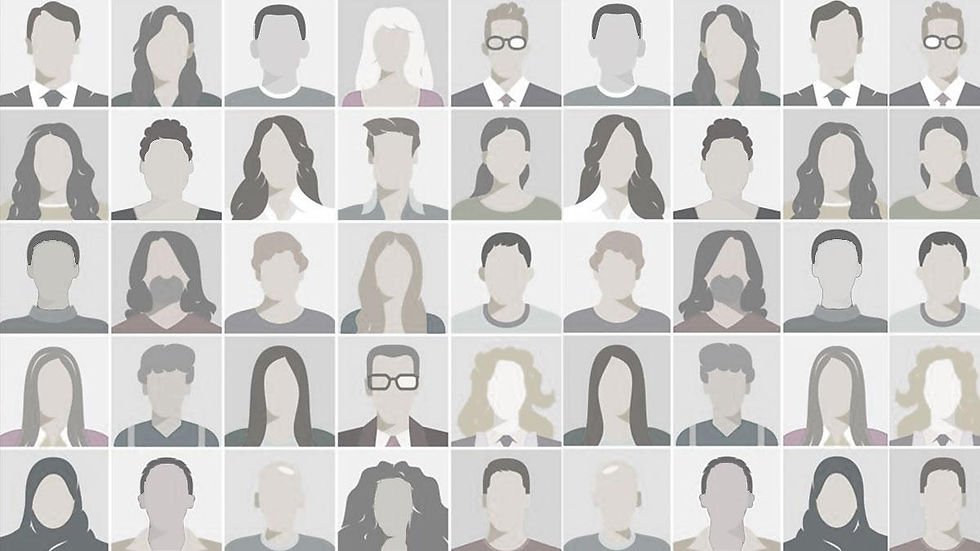The Culture Got Weird and So Did We
- Shaun K.
- Sep 5
- 3 min read

By Shaun K.

Was it empathy that hollowed out the culture? Or the fear of giving up control?
America’s Missed Recipe
America really did have the recipe to actually be the “land of the free,” but it spoiled the moment colonizers were mistaken for honorable men. The first big betrayal wasn’t just slavery or segregation—it was the broken promise to Native people. When Andrew Jackson rallied white settlers on hatred for Native success and pushed through the Indian Removal Act, that was the fork in the road.
If that promise had actually been kept, if that moment of coexistence had been nurtured and preserved, maybe America really could’ve been the melting pot it claimed to be. But white supremacy, forced labor, and the gatekeeping power made sure that freedom wasn’t shared equally. Even when people fought their way out of oppression, the system found new ways to hold them down.
The Weirdness of Whiteness
White people didn’t just control land and labor—they reshaped the whole vibe of the world. And it’s not an eerie feeling, it’s just… weird. Something about how space, time, and even culture got flattened into grids and aesthetics.
Land cut into suburbs. Families repackaged into sitcoms. Even emotions got marketed and sanitized. It’s intriguing, but not in a good way—it feels like reality was rebranded to match a vision of order and dominance. That disconnect is the weirdness we all live inside now.
From Loud to Sterile
The arc is clear when you look at aesthetics. From the 1920s through the 80’s, white America was loud. Neon signs, busy wallpapers, station wagons, sitcom families. Messy, chaotic, but still warm.
Then the 90s and early 2000s hit with color and texture—hip-hop, Black sitcoms, global pop culture. For a moment, the culture felt alive and vibrant, even as corporations quietly siphoned it for profit.
But by the late 2000’s and early 2010’s a new rebrand crept in. Logos flattened. Fashion went beige. Houses turned into sterile gray boxes. Instagram filters muted everything. Wealth whispered instead of shouted. The Kardashian image replaced the lived-in family home.
Now nostalgia itself is a craving—people long for clutter, mess, and warmth, because the modern world feels too curated to be real.
The White Savior Illusion
At the same time, the white savior trope quietly took over. In the 2010s, white creators started speaking up for marginalized groups—but usually without actually including them. When they did, it was through stereotypes they grew up with, not lived experiences.
They dramatized trauma, stamped “diversity” on it, and sold it back to the mainstream. Some may have started with good intentions, but capitalism made the whole thing feel watered down. What could have been solidarity became branding.
It wasn’t representation—it was projection. It wasn’t centering—it was circling. And audiences felt the difference, even if they couldn’t always explain it.
The Alt-Right Mirror
On the other end of the spectrum, the alt-right rose as the equal and opposite reaction. Where the savior complex dressed up white dominance as empathy, the alt-right branded it as defense
Through memes, dog whistles, YouTube spirals, and irony-poisoned jokes, young white men were radicalized into believing they were the victims. Resentment became identity. Humar became cover. And just like the savior trope, it all got commodified into clicks, merch, and influence.
Both ends feed each other. The hollowness of corporate “wokeness” gives the alt-right its ammo. And the cruelty of the alt-right gives the savior crowd its moral high ground. Either way, whiteness stays centered.
Conclusion: Nothing Feels Real, But Everything Still Matters
The deeper I look at culture—who’s shaping it, who’s selling it, and who’s left out—the more it feels like we’ve been living in a loop. Projection, performance, power, fear.
The white savior rewrites struggle into marketable empathy. The alt-right reframes resentment into identity. Both are part of the same broken system, a system where nothing feels authentic, even when it’s lou, colorful, or branded as progress
Bu the weirdness is’nt juts a glitch—it’s a signal. A reminder that warmth, community and authenticity are worth craving because they should be normal. Clarity isn’t paranoia—it’s the first step back toward something real.
This is one of those thoughts I needed to pull out of my head and put somewhere. If you’ve ever felt the “weirdness” too, let me know what it stirs in you.

_edited.jpg)

Comments